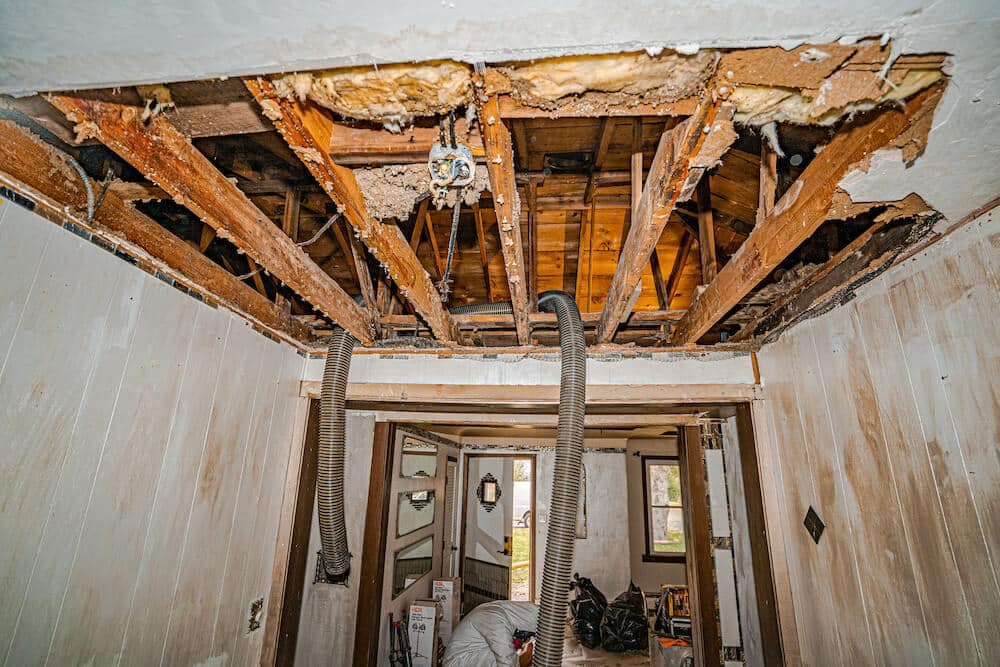Until the 1950s, knob and tube wiring used to be the standard way to rig up electrical wiring throughout a home. Most houses featured these systems, and they worked perfectly fine. The thing is, the average person’s electricity consumption has clearly increased drastically within just the last few decades.
Those old-fashioned systems of knob and tube wiring were never meant to power home computers, high-powered blenders, and flat-screen TVs all at the same time, and nowadays, trying to use them to operate modern appliances in your California home means you could literally be playing with fire.
With that being said, here’s why it’s vital that you replace any outdated electrical systems throughout your home, especially if they include knob and tube wiring.
What Makes Knob and Tube Wiring Dangerous?
As mentioned, knob and tube wiring was an electrical setup devised long before many of our current technological advancements were even a far-off dream and — in turn — before the majority of safety precautions regarding electricity were put into effect. Given that lack of a failsafe, knob and tube wiring is inherently a more dangerous configuration.
For one, these systems have no grounding wire, meaning homeowners are at a higher risk of electrical shock or fires. Putting insulation over knob and tube wiring components isn’t safe either, for similar reasons. Add on the fact that they began being phased out all the way back in the 50s, and that means any older electrical equipment automatically has a chance of causing problems.
However, despite the phase-out, knob and tube wiring continued to be used long past the 50s. Some electricians or homeowners began making modifications to cut corners but still allow their system to handle their growing electrical needs, leading to a further increase in the possibility of electrical hazards.
When you combine these issues with the potential for modern electronics to overload these older systems, it’s clear that knob and tube wiring no longer has much of a place in the modern home. Some insurance companies won’t even insure a home with these systems, and the ones that will are likely charging an excessive amount for coverage.
How Can I Tell If I Have Knob and Tube Wiring?
Your first step toward upgrading your electrical system to a safer alternative is to establish whether you have knob and tube wiring in your home, and thankfully, doing so shouldn’t be too difficult. These systems are often visible somewhere in the attic or basement. Look for wires that have porcelain knobs and cloth insulation, and if you’re still unsure, know that older switches or two-prong outlets with a grounding hole can signal the presence of a knob and tube wiring system as well.
The most surefire way to know whether you have knob and tube wiring is by calling a licensed electrician to inspect your system and help determine whether operating in your home is okay. If it’s not, they’ll work with you to find a solution. If they notice you have a knob and tube wiring system, they’ll likely recommend you invest in a replacement as soon as possible.
Addressing the Issue
If you have knob and tube wiring and are ready to make the upgrade, understand that it can be an involved home improvement project. The entire process of replacing a knob and tube wiring system could take anywhere from one to two weeks, depending on how large the home is. That said, if you team up with the right contractor, you should have no problem getting your home up and running with a modernized electrical system.
Before any replacement or adjustments start, you’ll need the proper permits. Your electrician should know that, and they’ll walk you through the process to ensure all the work they do is up to code. You’ll also have a third party inspect the work when it’s finished to confirm the job was done correctly.
With the necessary permits, the replacement can begin in earnest. Your electrician’s goal will be to find the least invasive and best method through which to completely remove the knob and tube wiring and replace it with something safer and more modern. Once the new components are correctly installed, the electrician will ground the system, ensure it meets all safety standards, and test it to ensure it’s running smoothly.
About the Removal and Replacement
While it may sound like an extensive project, it’s important to mention that replacing wiring is nowhere near as invasive as you might think. Even if it takes a while, most people can carry on with their daily lives while getting new electrical wiring installed.
An electrician should never need to gut your walls to replace knob and tube wiring. All they should have to do is make small holes in critical locations in order to remove and add wiring, and those will get patched up when the installation is complete. Any exposed knob and tube wiring will be removed entirely, but the wires concealed by walls or ceilings are simply deactivated.
Most people can comfortably live in their homes while the replacement is ongoing, as only power to specific areas will be switched off as the electrical team works on them, and you can return to your regular electrical use once they finish. Ultimately, that minimizes the intrusiveness of the replacement, allowing you to use most of your home’s appliances and electronics as you see fit.
You also won’t necessarily need to replace or add new outlets — most electricians will put them back how they were once the replacement is complete — but experts do recommend that you do it all at once if you’re interested in getting other electrical work done. It’s a much more efficient approach to these renovations and could help save you money.
Rid Your Home of Dangerous Wiring Today
Old, faulty wiring isn’t just less effective at powering your home — it’s a severe fire hazard that no homeowner should want to risk.
Whether you know that your home has a knob and tube wiring system, or even if you aren’t sure, Attic Projects is here to help. Our dedicated team of electricians has been helping California homeowners upgrade their electrical systems for years, and we know exactly how to do it in the safest, most straightforward way.
Contact our team today to learn more about our electrical services and schedule a free inspection!




